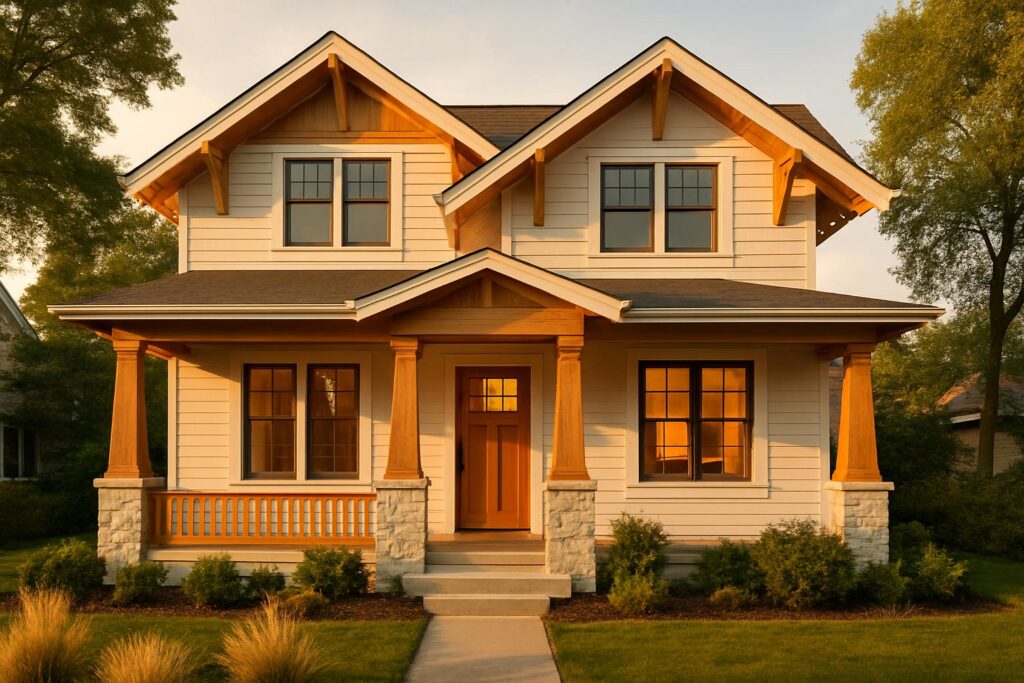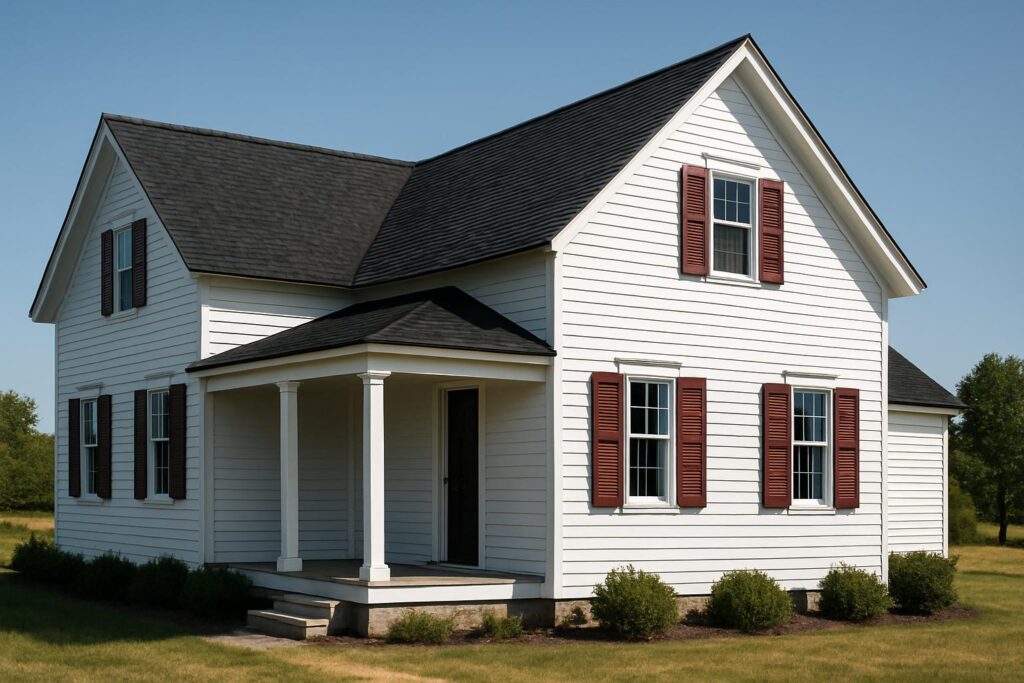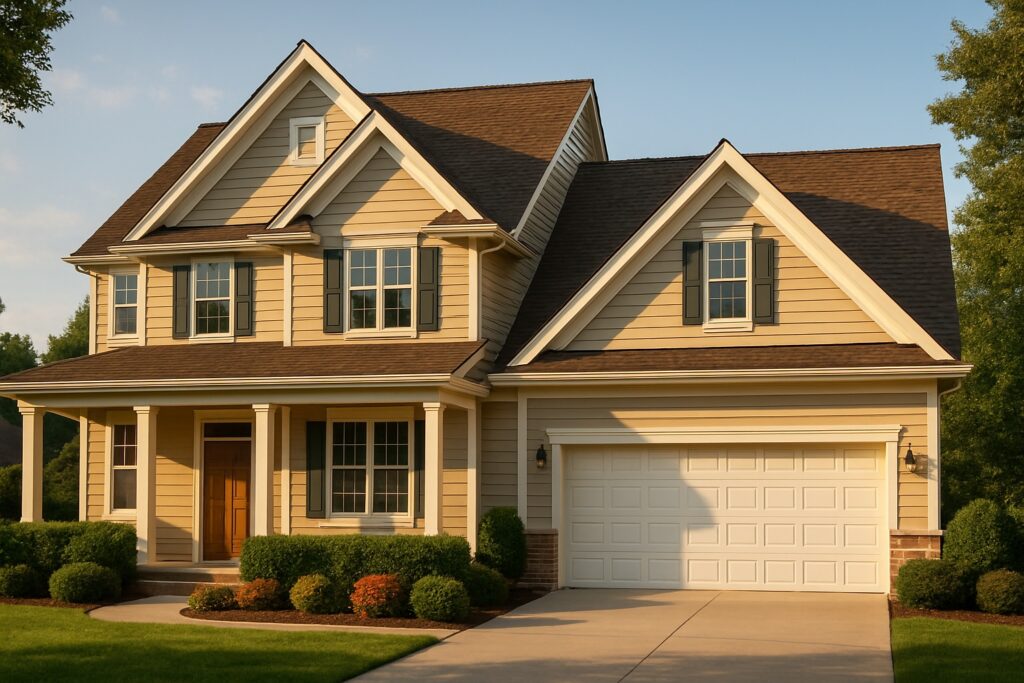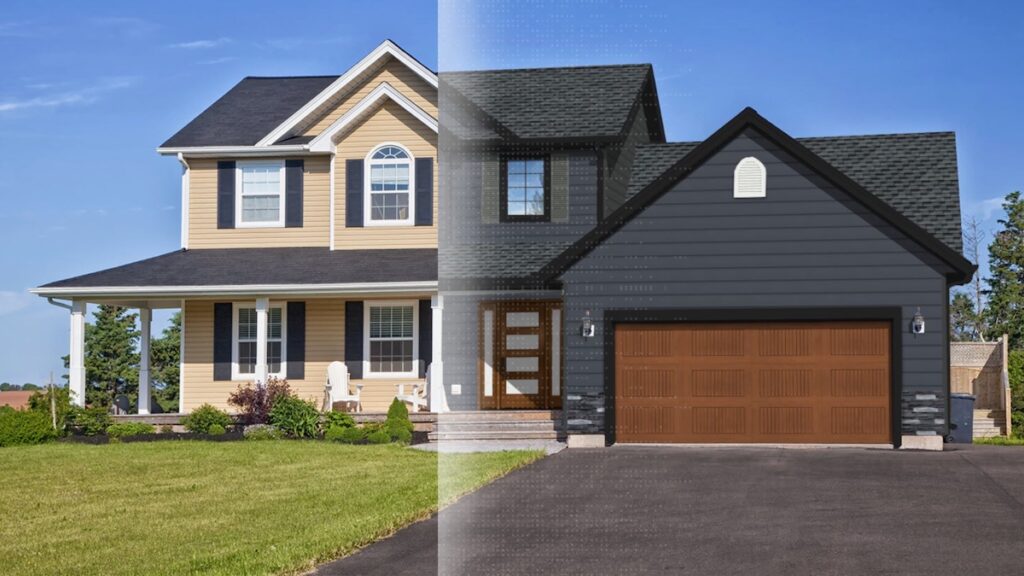Listen Now: A Deep Dive on Wood Grain Vinyl Siding
TLDR
Looking for siding that gives the charm of real wood without the hassle? Here’s a quick breakdown of why wood grain vinyl siding is a smart upgrade:
-
Mimics the rich texture and patterns of real wood through embossing techniques
-
Made from durable PVC resin that resists UV, moisture, pests, and impact
-
Requires minimal maintenance — no staining or painting needed
-
Offers a wide selection of colors and styles to fit traditional or modern homes
-
More affordable than real wood, with lower installation and upkeep costs
-
Environmentally friendly due to reduced demand for lumber and long lifespan
Want to visualize it on your own home? Try our Siding Visualizer Tool.
Introduction
Vinyl siding has long been a popular type of siding for homeowners looking to enhance the appearance and durability of their homes. While traditional vinyl siding offers a range of benefits, there is a new trend that is taking the housing industry by storm – wood grain vinyl siding. This innovative material combines the charm and warmth of natural wood with the practicality and low maintenance of vinyl. In this article, we will explore the various benefits of wood grain vinyl siding, from its composition to its environmental impact.
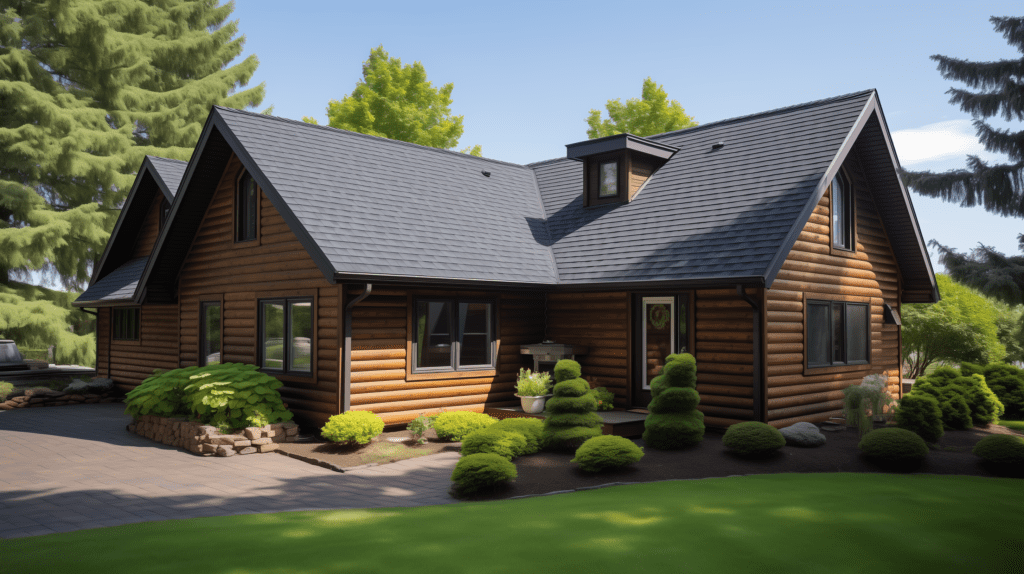
Understanding Wood Grain Vinyl Siding
Before delving into the advantages of wood grain vinyl siding, it is essential to understand what exactly this material is. Wood grain vinyl siding is a type of vinyl siding that is designed to mimic the look and texture of natural wood. It is made from polyvinyl chloride (PVC) resin, which gives it its durability and resistance to the elements. This siding option is a popular choice for homeowners who want the aesthetic appeal of wood without the high maintenance requirements. For more insights on vinyl textures and home exteriors, see 12 Types of Vinyl Siding for Homes: A Complete Guide.
What is Wood Grain Vinyl Siding?
Wood grain vinyl siding is a type of vinyl siding that features a textured finish that resembles the appearance of real wood. The texture is created through a process known as embossing, where a pattern is pressed into the surface of the siding. This gives the siding a realistic wood grain texture that can fool even the keenest eye.
When it comes to choosing the right siding for your home, wood grain vinyl siding offers a unique combination of beauty and practicality. With its realistic wood grain texture, it can add warmth and charm to any home exterior. Whether you have a traditional or modern-style home, wood grain vinyl siding can complement your architectural style and enhance your curb appeal.
One of the advantages of wood grain vinyl siding is its low maintenance requirements. Unlike natural wood siding, which needs regular staining, painting, and sealing to keep it looking its best, wood grain vinyl siding only requires occasional cleaning with soap and water to maintain its appearance. This can save homeowners both time and money in the long run.
The Composition of Wood Grain Vinyl Siding
Wood grain vinyl siding is composed of multiple layers that work together to provide durability and longevity. The outermost layer is the top coat, which is designed to resist fading and protect the siding from the sun’s harmful UV rays. This top coat is specially formulated to withstand the harshest weather conditions, ensuring that your siding will stay vibrant and beautiful for years to come.
Beneath the top coat is the color layer, which contains the pigments that give the siding its wood-like appearance. This layer is carefully formulated to replicate the natural hues and tones found in different wood species. Whether you prefer the rich, warm tones of cedar or the rustic charm of weathered barn wood, there is a wood grain vinyl siding option to suit your taste.
Below the color layer is the substrate, which provides structure and strength to the siding. This layer is engineered to be impact-resistant, ensuring that your siding can withstand the occasional bump or impact without denting or cracking. The substrate also helps to insulate your home, reducing energy loss and improving the overall energy efficiency of your property.
Finally, the innermost layer is the backer, which acts as a barrier against moisture and adds insulation to the home. This layer helps to prevent water infiltration, protecting your home from potential water damage and mold growth. The insulation properties of the backer also help to regulate the temperature inside your home, keeping it comfortable year-round.
The Aesthetic Appeal of Wood Grain Vinyl Siding
Wood grain vinyl siding is not only a practical choice for homeowners, but it also offers a remarkable aesthetic appeal. With its ability to mimic the look of natural wood effectively, this type of siding has become increasingly popular in recent years. Let’s explore some of the reasons why wood grain vinyl siding is so visually appealing.
Mimicking Natural Wood Effectively
One of the main advantages of wood grain vinyl siding is its ability to replicate the natural variations and imperfections found in real wood. The embossed texture gives the siding depth and dimension, creating a realistic wood grain effect that is nearly indistinguishable from the real thing. This attention to detail allows homeowners to achieve the desired aesthetic appeal of wood siding without the drawbacks.
Imagine walking up to a house with wood grain vinyl siding. As you approach, you notice the intricate patterns and textures that mimic the knots, grains, and other characteristics that give wood its unique charm. The siding not only looks like wood from a distance but also feels like wood up close. It’s a visual and tactile experience that adds a touch of authenticity to any home.
Furthermore, manufacturers offer a wide range of wood grain patterns, allowing homeowners to choose the one that best complements their home’s architectural style. Whether you prefer the rustic charm of oak or the sleek elegance of maple, there is a wood grain vinyl siding option that will suit your taste. For more exterior design inspiration, check out 9 Best Exterior Sidings for Your Home.
Variety of Colors and Textures
Wood grain vinyl siding not only mimics the look of natural wood but also offers a vast array of colors and textures to choose from. This versatility allows homeowners to customize their exterior and create a unique look for their home.
Perhaps you envision your house with the warm hues of cedar, evoking a sense of coziness and tradition. Or maybe you prefer the rich tones of mahogany, adding a touch of sophistication and luxury to your home’s exterior. With wood grain vinyl siding, you have the freedom to choose the color and texture that best reflects your personal style and enhances the overall aesthetic of your property.
Moreover, manufacturers have developed innovative techniques that create a more authentic appearance. By adding realistic wood grain embossing and multi-tone colors, they have elevated the visual appeal of wood grain vinyl siding to a whole new level. These advancements ensure that your siding not only looks like wood but also possesses the depth and complexity that make natural wood so captivating.
Durability and Maintenance of Wood Grain Vinyl Siding
Wood grain vinyl siding not only provides an attractive finish, but it is also known for its durability and low maintenance requirements. These qualities make it an excellent long-term investment for homeowners looking to enhance their home’s exterior.
Weather Resistance Features
One of the key benefits of wood grain vinyl siding is its ability to withstand the harshest weather conditions. It is highly resistant to moisture, which means it will not rot or warp like natural wood. Additionally, it is resistant to pests, such as termites, that can cause significant damage to traditional wooden siding. This durability ensures that the siding will maintain its appearance and protect the home for many years to come.
Low Maintenance Requirements
Unlike traditional wooden siding, wood grain vinyl siding requires minimal maintenance. It does not require regular staining or painting to maintain its appearance. A simple cleaning with a mild detergent and water is usually sufficient to keep the siding looking its best. This not only saves homeowners time and effort but also reduces long-term maintenance costs.
Cost-Effectiveness of Wood Grain Vinyl Siding
Wood grain vinyl siding offers homeowners the opportunity to achieve the aesthetic appeal of wood at a fraction of the cost. From installation to long-term savings, this siding option is a cost-effective choice for enhancing the exterior of your home.
Affordable Installation Costs
Compared to traditional wood siding, wood grain vinyl siding is more affordable to install. It requires less labor and fewer specialized tools, which reduces the overall installation costs. Additionally, the wide availability of wood grain vinyl siding products means that homeowners have more options to fit their budget.
Long-term Savings
In addition to the initial cost savings, wood grain vinyl siding offers long-term savings for homeowners. Its resistance to fading and deterioration means that it will maintain its appearance for many years, reducing the need for costly repairs or replacements. Furthermore, the low maintenance requirements translate into savings on painting, staining, and other maintenance-related expenses.
Environmental Impact of Wood Grain Vinyl Siding
Wood grain vinyl siding not only provides aesthetic, durability, and affordability benefits but also offers environmental advantages that make it an environmentally friendly choice for homeowners.
Sustainability Considerations
Wood grain vinyl siding is an environmentally sustainable option when compared to traditional wood siding. It reduces the demand for natural wood, helping to preserve forests and protect ecosystems. Additionally, wood grain vinyl siding is often made from recycled materials, further reducing its impact on the environment. Its long lifespan also means fewer materials are required for repairs or replacements, resulting in less waste over time.
Conclusion
In conclusion, wood grain vinyl siding offers a range of benefits for homeowners. From its realistic wood grain appearance to its durability and low maintenance requirements, this siding option provides an appealing alternative to traditional wood siding. Additionally, its cost-effectiveness and environmental advantages make it a wise choice for those looking to enhance the exterior of their homes while minimizing their ecological footprint. Consider wood grain vinyl siding for its numerous benefits and transform your home’s exterior into a beautiful and long-lasting masterpiece.
If you’re still evaluating your options, browse our article on Vinyl Siding vs. Aluminum Siding: Which Is Best for Your Home? for a side-by-side comparison.
FAQs: Additional Vinyl Siding Considerations
What’s the difference between board and batten and other siding styles?
Board and batten siding has wide vertical boards with narrower strips (battens) covering the seams. It’s a popular choice for rustic or farmhouse exteriors.
Is fiber cement siding better than wood grain vinyl siding?
Fiber cement siding is more impact-resistant and fire-resistant but requires more upkeep. Vinyl siding is easier to maintain and usually less expensive.
How does clapboard compare to wood grain vinyl siding?
Clapboard is a traditional horizontal siding style made from natural wood. While beautiful, it requires more maintenance and is more susceptible to rot and warping.
Does wood grain vinyl siding help prevent rot and warping?
Yes, it resists moisture absorption, making it less likely to rot or warp over time.
Can wood grain vinyl siding mimic the look of log siding or other types of siding material?
Yes, vinyl siding can be manufactured to resemble log siding, stone, or other types of siding styles.
Is vinyl siding a good option for exterior siding in cold climates?
Yes, vinyl siding performs well in various weather conditions and offers insulation benefits when paired with appropriate underlayment.
What type of wood textures are commonly mimicked in vinyl siding?
Popular types include cedar, oak, and pine, though manufacturers offer a range of options.
Is it common for vinyl siding to include recycled siding material?
Many vinyl siding products incorporate recycled content, contributing to their sustainability profile.


